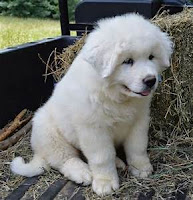Have Dog, Will Travel: A
Poet’s Journey, by Stephen Kuusisto (Simon & Schuster, 2017, 237 pages, $25)
Acceptance, or . . . ?
Stephen
Kuusisto is a college English teacher, son of a college president and an
alcoholic mother, brother to a physician, who was brought up to hide* his near-blindness,
to pretend to see, to mask his imperfection, his disability** (hard to believe
in this day and age).
“I
learned . . . to walk mnemonically. It was eight steps down from the English
Department to the sidewalk; seventeen steps to a funny break in that same
sidewalk which somehow never got repaired. . . . “ (p. 13)
Definitely a Poet!
An
adjunct professor and Fulbright Scholar, he is laid off from his position and
wanders – to eventually apply for a guide dog*** from Guiding Eyes for the
Blind (GEB), an experience that literally saves him and changes his life for
the better, forever (even so, a guide dog is a huge responsibility). He
navigates and loves New York City and even gets married!
And
all through Have Dog, Will Travel,
the author weaves in quotes from the great writers, from Confucius to Plato and
Aristotle, Walt Whitman and Jean Paul Sartre, and beyond.
From a Deny-er to an
Ambassador for the Blind
Kuusisto
and his guide dog, Corky, meet Rudy Giuliani quite by accident when the mayor
comes to the GEB campus to pick up a “re-careered” release dog.
Later,
the author works for GEB for five years in the capacity of graduate support
coordinator, traveling the country and speaking for guide dogs before returning
to college English teaching.
“Arranged Marriage”
Assistance
dogs are either owner-trained (usually with a professional service dog trainer)
or obtained from an organization like GEB - raised by volunteer puppy raisers
for a year, then attending school for advanced training for up to a year.
Finally,
the dog is matched (both gait and temperament) with his person – an “arranged
marriage” that will last throughout the dog’s life. It’s as if the dog knows
his purpose is to help one person and he loves having a job and the thanks that
comes along with it. The person’s job is harder – learning to trust his dog.
Dog College
The
first lesson at the three-week “Dog U” is on praise, a necessary constant to
give one’s guide dog. The dogs have been trained: now it is time for the
handlers to learn while during this time, both handler and dog become a team,
learning together.
Long- and Short-Term
Histories
Through
it all, the reader comes away with the history**** of assistance dogs and what
a dog can do for someone – get him there faster – if the person learns to trust.
Before-dog, the blind person is usually ignored: after-dog, both are included
in conversation, and many people go out of their way to do so. However, there
are still people and businesses that are not aware that service dogs have
access rights when with their person.
Updating. . . .
Dog
trainers will cringe at the leash corrections in the book, but it must be
remembered that this is the story of Corky, the author’s first of five guide
dogs: hopefully, nowadays, most are being trained with positive reinforcement
instead of punishment-based methods and training collars.
And now, . . . .
Want
to become a service dog trainer? Be prepared to apprentice for at least 2-3
years*****. On the other hand, there is a constant need for puppy raisers******:
Have Dog, Will Travel may just
convince you and your family to become a puppy raiser, too!
*”. . . in a world where normalcy
is a prerequisite to acceptance, nothing is worse than presenting an overt
defect.” (p. 12)
**a detailed ADA definition of
disability appears on page 200.
***characteristics of a good
guide-dog include empathy, communication,
cunning, memory and reasoning.
****first used to assist wounded
war veterans. Sergeant Stubby of WWI fame, actually became a service dog after
the war when his person went to Georgetown University (and also became the
Hoya’s mascot)
*****the US has about a dozen
guide-dog schools, all nonprofit organizations
******(p. 223) “You give
everything to raising a guide-dog puppy. . . your happiness, your wakefulness,
your love of life itself. Puppies take this into their hearts like vitamins.”









